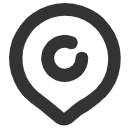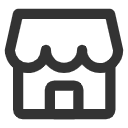- Attractions in Namibia
- Language
- Namibia is a linguistically diverse nation with Oshiwambo widely spoken in the northern regions, while English serves as the official language for education, government, and business, easing communication for international visitors. Afrikaans and German are also commonly used, reflecting historical influences, with Afrikaans acting as a lingua franca among various ethnic groups. Alongside indigenous languages like Damara/Nama, Herero, and San, these languages highlight Namibia's rich cultural and linguistic heritage.
- Best time to visit
- The best time to visit Namibia is during the cooler dry season from May to October. During these months, temperatures are more moderate, making it ideal for wildlife viewing as animals congregate around waterholes. This period also boasts clear skies, minimal rainfall, and lower malaria risk, enhancing outdoor activities such as hiking and sightseeing. The landscapes are particularly stunning, with clear visibility and vibrant colors, especially in the desert regions. While daytime temperatures are pleasant, evenings can be cool, so packing layers is advisable. This season aligns with the peak tourist period, so planning and booking in advance is recommended to secure accommodation and tours.
- Festivals
- Date: MarchFestival name: Independence DayCelebrating Namibia's independence from South African mandate on 21st March 1990, this national holiday is marked with vibrant parades, music, dance, and various cultural performances across the country, especially in the capital, Windhoek. It's a profound way for travelers to witness national pride and unity.
- Date: MarchFestival name: Windhoek KarnevalDrawing inspiration from German carnival traditions, WiKa is a festivity filled with colorful costumes, parades, and masquerade balls. Predominantly celebrated in Windhoek, it offers a unique blend of German and African cultural elements, making it a fascinating experience for visitors keen on enjoying lively celebrations and cultural exchanges.
- Local cuisine
- Kapana
- Kapana is street food at its finest, consisting of grilled, spiced meat (often beef) served with vetkoek (deep-fried dough balls) or on its own. It's prepared over open flames in marketplaces, creating a smoky, tender treat.
- Biltong
- This dried, cured meat, similar to jerky, is a beloved snack in Namibia, made from beef, game, or ostrich, seasoned with vinegar, salt, coriander, and other spices. The preparation involves air-drying the meat for several days. Biltong holds a special place in Namibian culture as a hearty, protein-rich snack that sustained travelers and hunters in the past.
- Potjiekos
- Literally meaning "small-pot food," potjiekos is a slow-cooked stew made in a cast-iron pot over an open fire. It includes meat, vegetables, and sometimes rice or potatoes, seasoned with spices.
- Mahangu Porridge
- A staple food, mahangu porridge is made from pearl millet, water, and sometimes yeast. It's cooked to a thick consistency and often served with meat or vegetable stews. This porridge is a dietary cornerstone in many Namibian households, revered for its nutritional value and cultural significance in feeding generations.
- Namibian Beer
- Namibia's beer culture is a legacy of its German colonial history, with local breweries producing a variety of quality lagers and ales following the Reinheitsgebot (German Beer Purity Law) of 1516.
- Marula Juice and Ombike
- Made from the fruit of the marula tree, marula juice is a sweet, tangy beverage often fermented to create a potent homebrew known as ombike or omalovu. It's a traditional drink enjoyed during social gatherings and ceremonies, embodying the spirit of celebration and community in Namibia.
- Packing
When packing for Namibia, bring lightweight, breathable clothing for the heat and layers for cooler mornings and evenings. Neutral-colored clothes are best for safari, and sturdy shoes are needed for hiking. Don't forget sun protection, insect repellent, a refillable water bottle, and a camera with a zoom lens for capturing wildlife and landscapes.
- Currency
Namibia uses the Namibian Dollar (NAD) as its official currency, which is pegged to the South African Rand (ZAR) at a 1:1 exchange rate, and the Rand is also widely accepted throughout the country. The currency comes in denominations of N$10, N$20, N$50, N$100, and N$200 notes, as well as coins in denominations of 5c, 10c, 50c, N$1, and N$5. ATMs are readily available in most urban areas, larger towns, and shopping centers, offering a convenient way to withdraw cash. International travelers should note that while ATMs are widespread, it's advisable to have some cash on hand when traveling to remote areas or national parks where ATM access may be limited. Credit cards, particularly Visa and MasterCard, are widely accepted in hotels, restaurants, and shops in urban and tourist-centric areas. However, it's less likely for smaller establishments and rural areas to accept credit cards, so carrying some cash is recommended when exploring these regions.
- Transport
Namibia's primary gateway is Hosea Kutako International Airport (WDH), located near the capital, Windhoek, serving as the main hub for international flights. Walvis Bay Airport (WVB) on the coast also handles some international traffic, primarily from regional destinations. Once in Namibia, the road network offers the most comprehensive way to explore, with well-maintained highways and gravel roads leading to major attractions. Car rental is a popular option, allowing for flexibility and access to remote areas; just remember that driving is on the left side, and 4x4 vehicles are recommended for off-road conditions. Public transport within cities includes taxis and bus services, though for longer distances between cities, private shuttle services and domestic flights can be more convenient, albeit costlier. The Namibian Railways network provides an adventurous, if less frequent, alternative for reaching different regions. For navigating Namibia's transportation, planning ahead is crucial, especially for securing rental vehicles or booking domestic travel during peak tourist seasons.
- Emergency
A significant taboo involves pointing at someone with your index finger, which is considered rude; it's preferable to use a flat hand. Public displays of affection are frowned upon, especially in rural and conservative areas. It's also important to ask for permission before taking photos of people, as doing so without consent can cause offense. Additionally, discussing politics or criticizing the country without a deep understanding of its historical context and current issues can be seen as disrespectful. When it comes to emergency situations, Namibia has a universal emergency contact number, which is 112.
- Power socket
In Namibia, the standard voltage is 220-240 volts, and the frequency is 50 Hz, which aligns with the electrical systems used in many other countries, particularly in Europe and the United Kingdom. The country primarily utilizes two types of power sockets: Type D (Indian BS-546) and Type M (South African SABS1661), both of which are characterized by three round pins.



